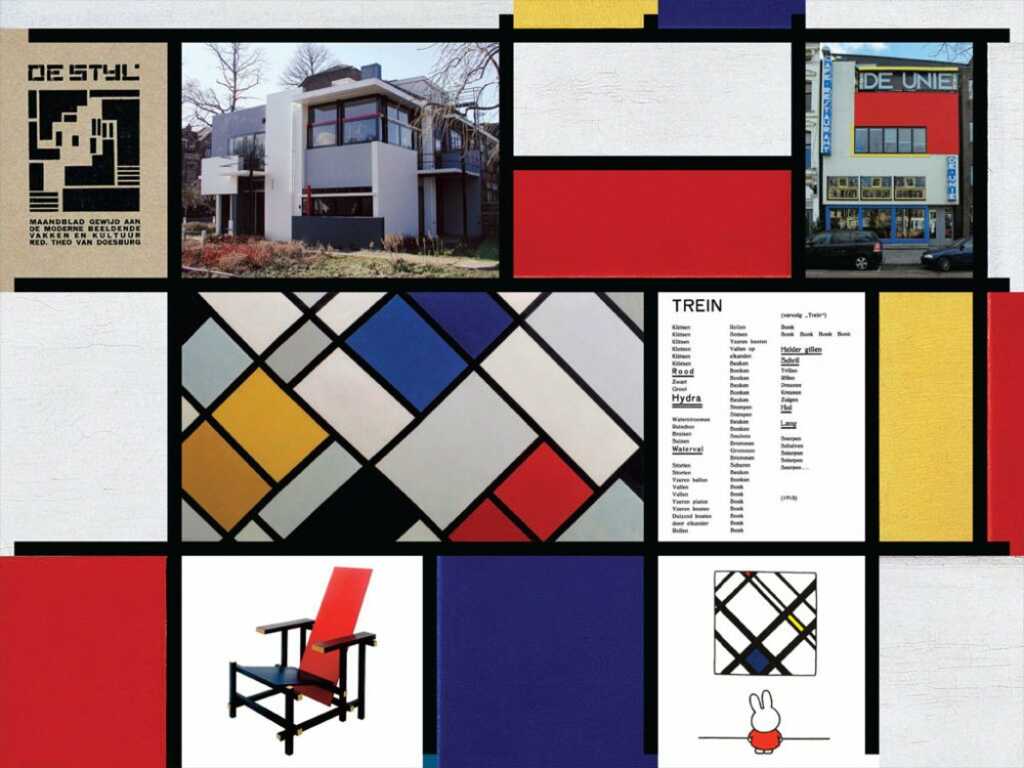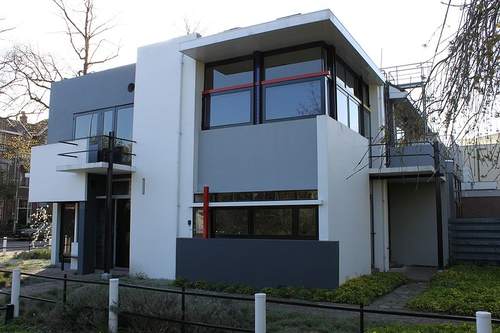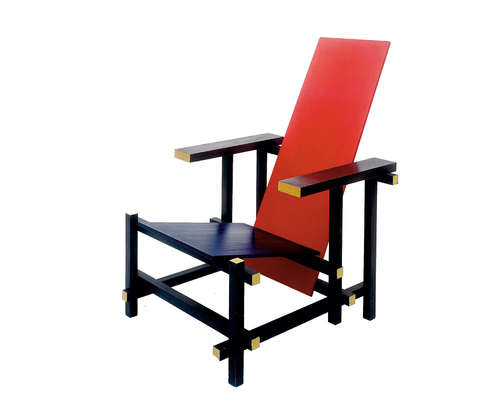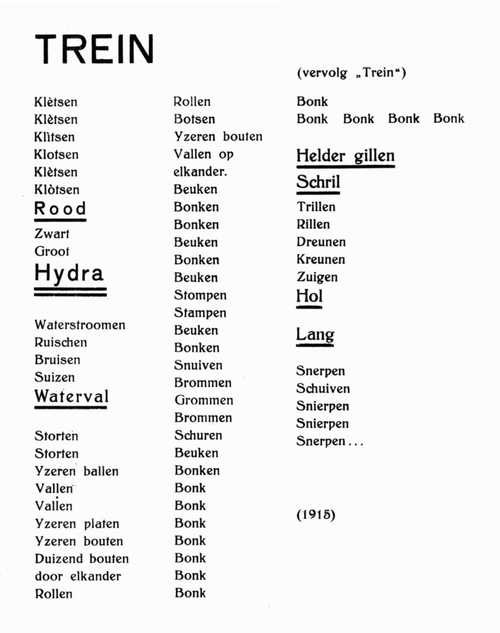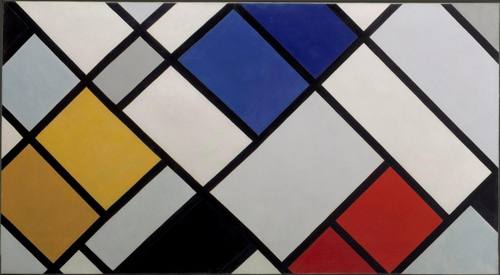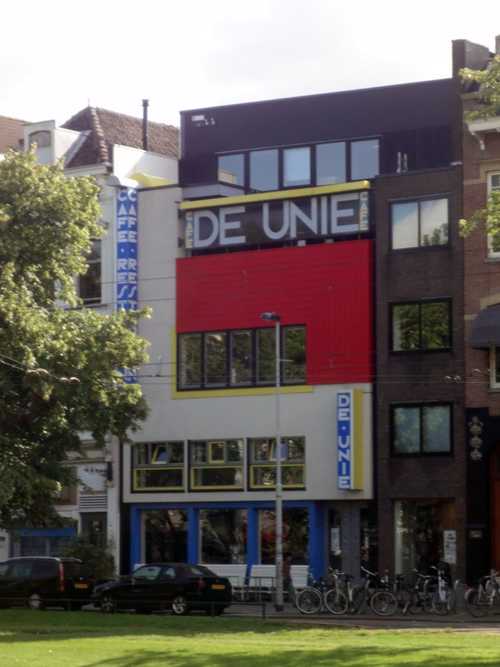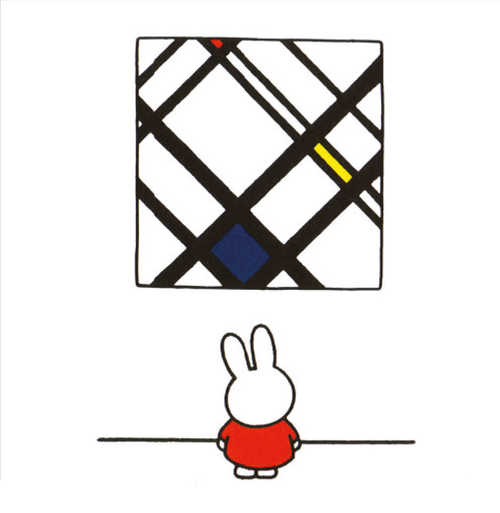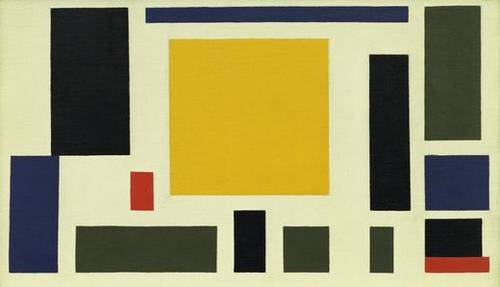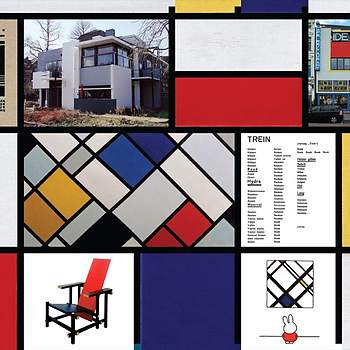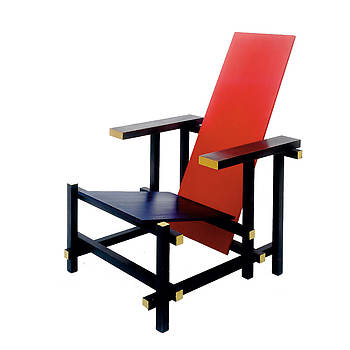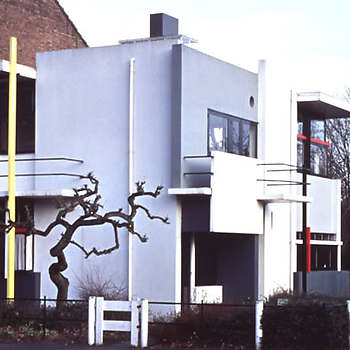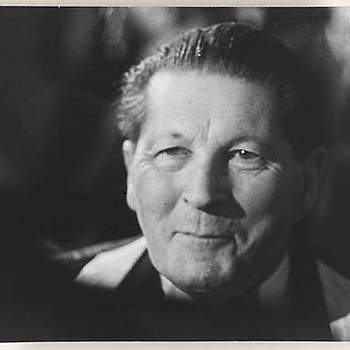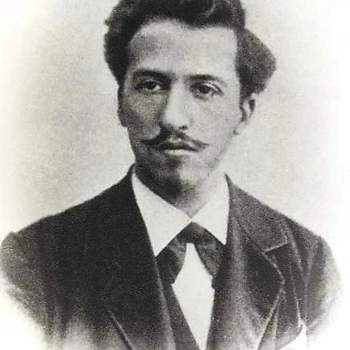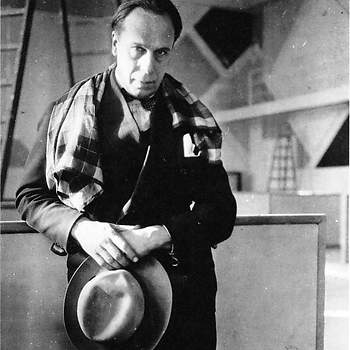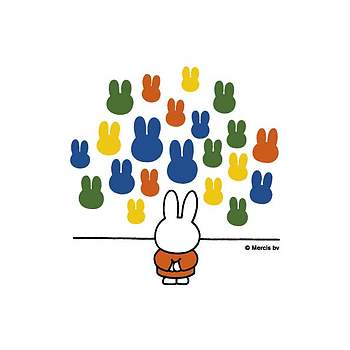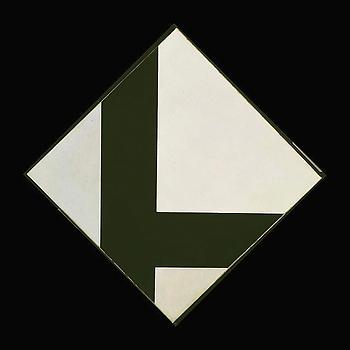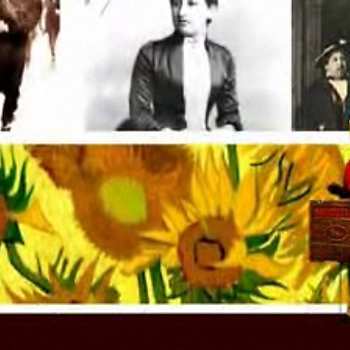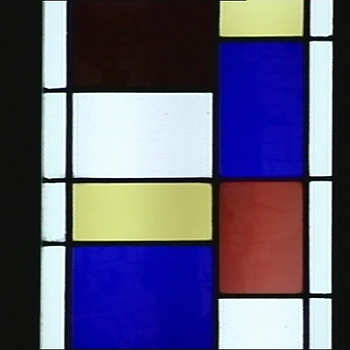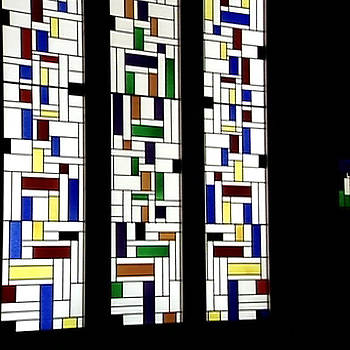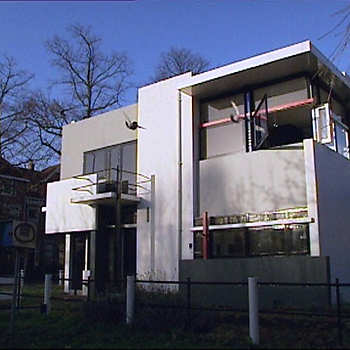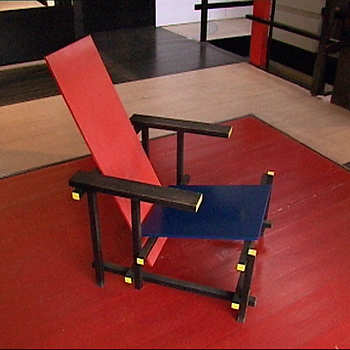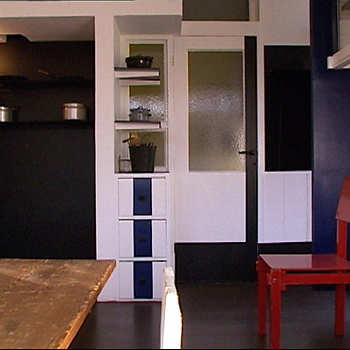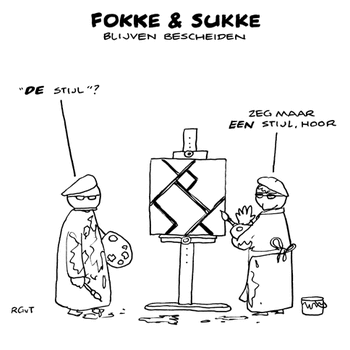Gerrit Rietveld’s famous red and blue chair of 1918 is not only red and blue: the frame is yellow and black.
The chair therefore still meets the requirements that the artists of the De Stijl (The Style) movement upheld with regard to visual arts. In their eyes, only the three primary colours (red, blue and yellow) and the three “non-colours” (black, white and grey) were acceptable. Moreover, all lines had to be straight and the angles right-angles.
Their principles of colour are still reflected, for example, in the works of Dick Bruna (“Miffy”). In fact, Dick Bruna was influenced by De Stijl but he deviated from the strict principles by immediately using the colour green and curved lines.
More important than the design aspects of De Stijl was the substantive task that the artists set themselves. The artistic content of their work was not meant to reflect reality, but rather to express the harmony that they believed was the law of the universe. This harmony demanded abstract shapes – straight lines and bright colours. Their works of art therefore did not simply reflect the incidental state of mind of the artist but helped the public along the path to truth and purity.
The group and their monthly journal called “De Stijl” were established in 1917. It is easy to understand that this longing for harmony developed in the chaotic times of the first World War. The journal continued to be printed until 1931, when the artist Theo van Doesburg died. After his death the group dissolved. The artists who made up De Stijl were not a fixed group: the composition fluctuated. The architect Gerrit Rietveld and the artist Piet Mondrian, two of the movement’s key members, never even met one another.
De Stijl was very internationally oriented and gained an international reputation. And yet the movement was firmly rooted in Dutch traditions. The art historian H.L.C. Jaffé once said that the aim of De Stijl – to achieve the abstract, beauty and purity – had its origins in the iconoclasm and the restrained, Calvinist art of seventeenth-century Dutch painters like Vermeer, Saenredam and De Hooch.
According to Jaffé, one can even see similarities between the art of De Stijl and the struggle of the Dutch to master nature. After all, the Dutch landscape with its precise geometric shapes, its straight lines and waterways brings to mind the paintings of Mondrian. In short, geometry and precision, the abstract and purity had been sought in the Netherlands for centuries and this is reflected in the artistic works of the The Stijl movement.
